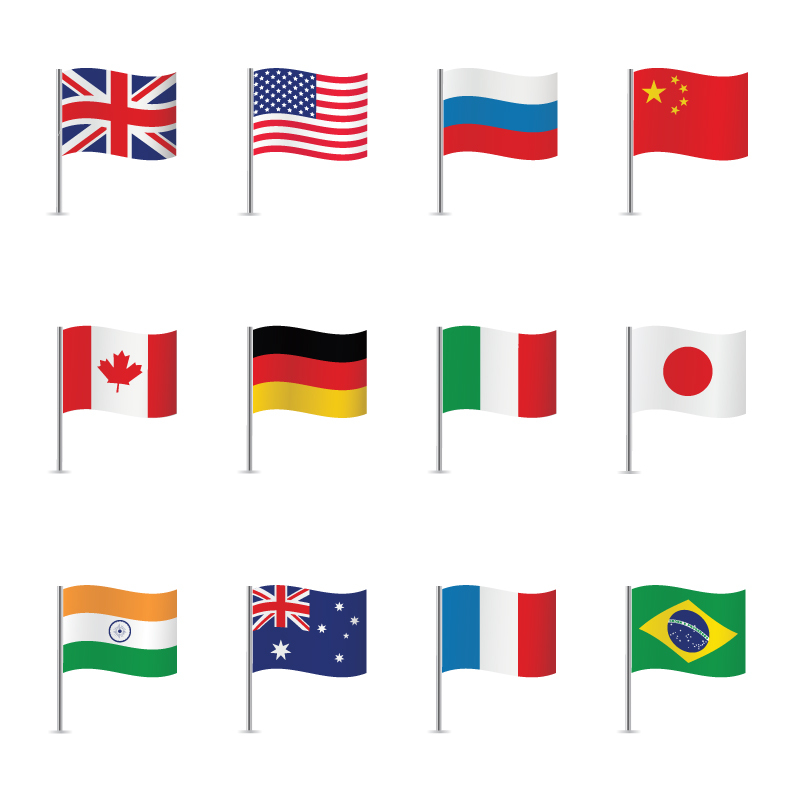The Olympic Games are not just a celebration of athletic prowess; they are also a vibrant display of national identity through the use of country flags. Each flag represents the culture, history, and values of its nation, and during the Olympics, these flags become symbols of pride and unity. As the world comes together to compete, the flags tell stories of heritage, struggle, and achievement, making them a vital part of the Olympic experience.
In this article, we will explore the significance of Olympic country flags, diving into their designs, meanings, and the countries they represent. We will also discuss how flags are presented during the Games, the importance of flag etiquette, and the stories behind some of the most recognizable flags in the world. By the end of this comprehensive guide, you will appreciate not only the beauty of these flags but also their deeper meanings.
The Olympic country flags serve as a unique way to celebrate national pride and camaraderie among nations. Whether you are a sports enthusiast, a flag collector, or simply curious about the Olympic Games, this article will provide you with valuable insights into the fascinating world of Olympic flags.
Table of Contents
- History of Olympic Country Flags
- Design Elements of Country Flags
- Flag Etiquette in the Olympics
- Notable Olympic Country Flags
- Meanings Behind Popular Flags
- Collection and Display of Olympic Flags
- Interesting Facts About Olympic Flags
- Conclusion
History of Olympic Country Flags
The tradition of displaying national flags at the Olympic Games dates back to the early 20th century. The first modern Olympic Games, held in Athens in 1896, saw no formal flag ceremonies, but this changed dramatically in subsequent games. Here are some key historical milestones:
- 1900: The Paris Olympics included the first official flag ceremony, where participating nations paraded their flags.
- 1920: The Antwerp Games established the tradition of raising flags of all participating nations.
- 1936: During the Berlin Olympics, the use of flags became more prominent, with a grand display of flags at the opening ceremony.
- 1984: The Los Angeles Olympics saw a significant increase in the number of flags displayed, representing over 140 nations.
Design Elements of Country Flags
Country flags are designed using various elements that symbolize national identity. Understanding these designs can enhance our appreciation of Olympic country flags. Here are some common elements:
Colors
Colors in flags often represent specific meanings and cultural significance. For example:
- Red: Courage and valor
- Blue: Freedom and vigilance
- Green: Hope and prosperity
- White: Peace and purity
Symbols and Emblems
Many flags feature unique symbols or emblems that reflect the nation’s heritage. Examples include:
- The maple leaf on the Canadian flag symbolizes nature and unity.
- The eagle on the Mexican flag represents strength and independence.
Flag Etiquette in the Olympics
Flag etiquette is an essential aspect of the Olympic Games, ensuring respect for national symbols. Here are some key points to remember:
- Flags should always be displayed upright and should never touch the ground.
- When the national anthem is played, athletes and spectators should stand and show respect.
- Flags should be raised in the order of the participating countries, generally in alphabetical order.
Notable Olympic Country Flags
Several flags have become iconic, representing not just their countries but also the spirit of the Olympics. Here are a few notable examples:
- United States: The Stars and Stripes is recognized globally and symbolizes freedom and democracy.
- Japan: The Nisshoki, with its simple red circle, represents the sun and has deep cultural significance.
- Brazil: The green and yellow flag features a diamond shape and symbolizes the country's rich resources.
Meanings Behind Popular Flags
Many Olympic flags carry rich meanings that reflect national narratives. Here are some examples:
United Kingdom
The Union Jack combines elements of the crosses of St George, St Andrew, and St Patrick, symbolizing the unity of England, Scotland, and Ireland.
South Africa
The South African flag features a unique design that represents the country’s diversity and inclusiveness, with colors symbolizing different cultural groups.
Collection and Display of Olympic Flags
Flag collecting is a popular hobby among enthusiasts, especially those who focus on Olympic country flags. Here are some tips for collectors:
- Join flag-collecting communities online to share information and resources.
- Attend sports events and exhibitions where Olympic flags are displayed.
- Purchase flags from reputable sources to ensure authenticity.
Interesting Facts About Olympic Flags
Here are some fascinating facts that you may not know about Olympic country flags:
- The Olympic flag itself features five interlocking rings, representing the five continents.
- Each country has a specific ratio for its flag, adding to its uniqueness.
- Flags are often made from durable materials to withstand outdoor conditions during the Games.
Conclusion
In conclusion, Olympic country flags are more than just pieces of fabric; they are powerful symbols of national identity, pride, and unity. Understanding their history, design, and significance enhances the Olympic experience for athletes and spectators alike. We encourage you to explore the flags of different nations and appreciate the stories they tell. Share your thoughts in the comments below or check out other articles on our site to learn more about the Olympic Games!
Thank you for joining us on this journey through the vibrant world of Olympic country flags. We hope to see you back for more exciting content!


